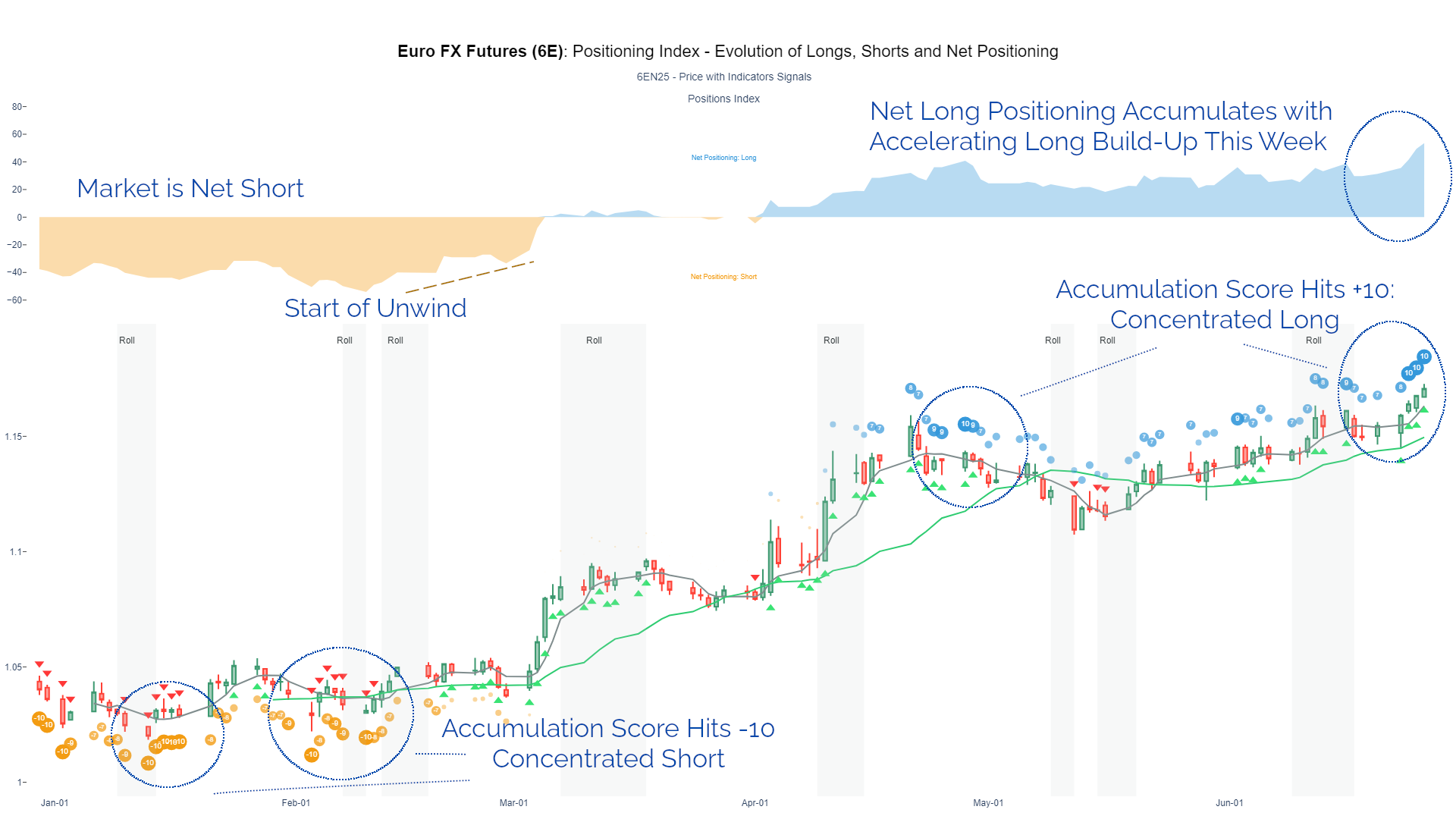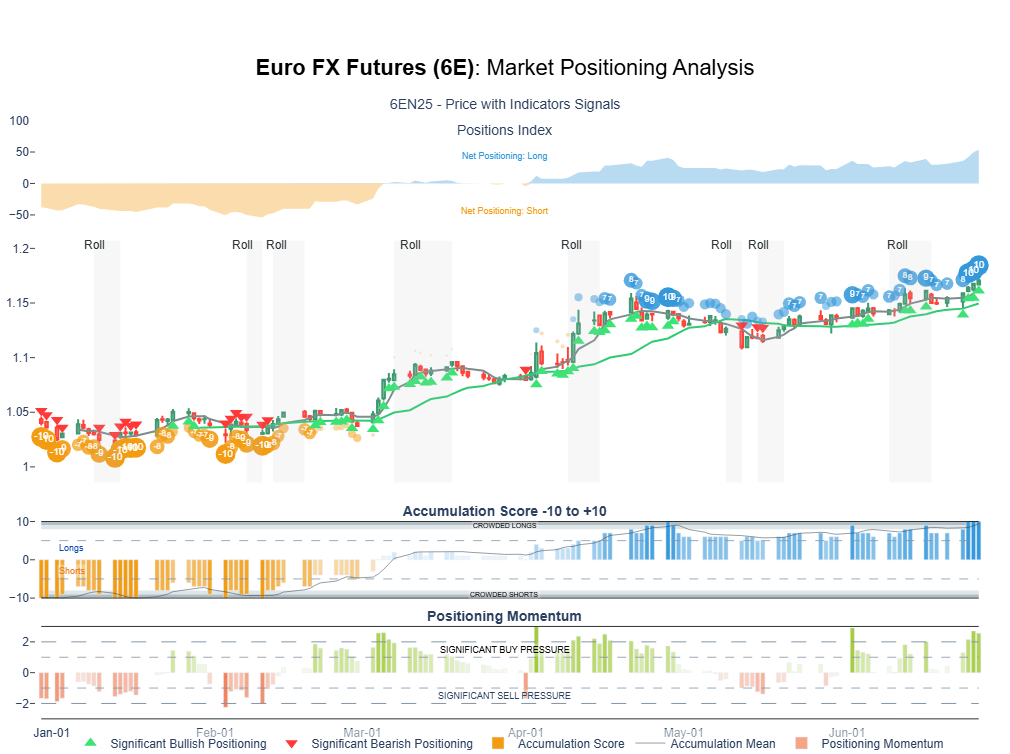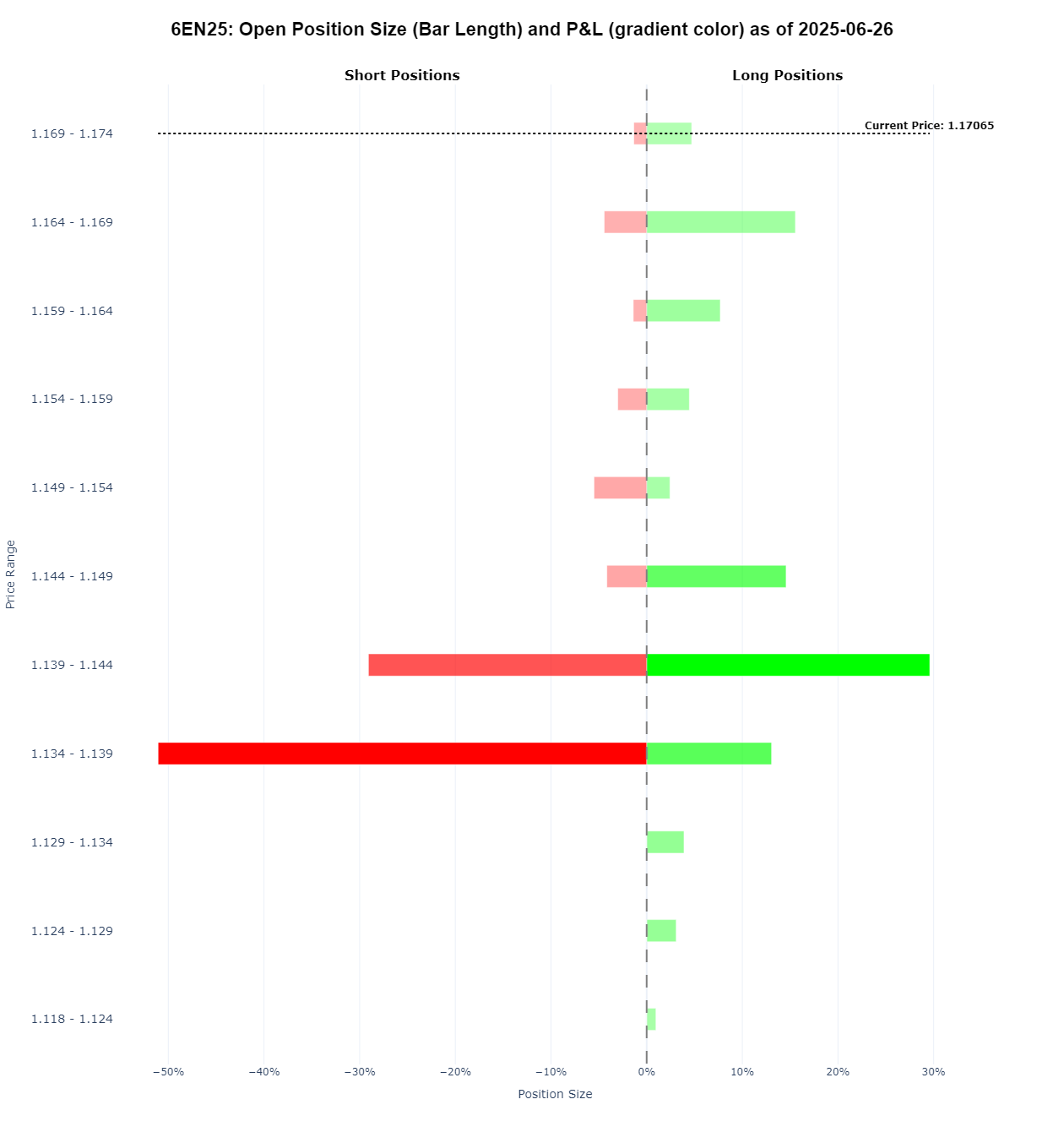After a year marked by volatility and shifting narratives, the EUR/USD market has undergone a dramatic transformation. What began as a concentrated short positioning against the euro has flipped into a crowded long, with traders and investors rapidly recalibrating their outlooks. While macroeconomic fundamentals and central bank policy have played important roles, trade policy shifts from the Trump administration have acted as primary catalyst for this great rotation. In the following analysis, we dissect the timeline and mechanics of this positioning reversal, highlighting the key policy events that triggered shifts in sentiment and explore the implications for the next phase in the EUR/USD trajectory.
A structural shift in net EUR/USD positioning is underway, driven by a surge of new market participation. Since the beginning of the year, EUR/USD has attracted increasing capital flows, with open interest in Euro FX Futures rising by approximately 24%. Concurrently, the composition of those positions has changed significantly with long positions increasing by 40%, a clear signal of growing bullish conviction.
An analysis of the periods marked by the most pronounced shifts in EUR/USD positioning reveals that Trump’s fiscal policy, particularly tariff announcements, has been one of the primary drivers.

Tariffs alone triggered substantial short covering in EUR/USD between February 10 and February 26, following the imposition of 25% tariffs on Canada and Mexico. This coincided with broad-based dollar weakness, which supported the euro’s rebound. Additionally, a notable accumulation of long euro positions occurred between April 2 and April 22, aligned with the introduction of 20% tariffs on the Eurozone.
The improving fundamental backdrop has reinforced confidence in the long EUR/short USD trade. The move from 1.04 to 1.09 in March was accompanied by a significant increase in long positioning, rising by 7% in just two sessions, driven largely by a higher-than-expected February CPI print in the Eurozone. This surge in inflation data prompted a rapid reassessment of ECB policy expectations, adding further momentum to the euro’s rally.
The influence of Trump’s policies on market positioning is a critical factor, particularly given how dramatically positioning has shifted since the start of the year. Unlike macroeconomic data, which tend to evolve gradually, policy signals, especially trade-related announcements, can change swiftly and are open to interpretation. Markets have transitioned from a concentrated short position in January and February to the opposite extreme: a heavily crowded long stance at current levels (as reflected in the Accumulation Score chart). In such an environment, any hesitation or reversal on the fiscal policy front could trigger a rapid rebalancing of positions.
This is not the first time the market has reached a concentrated long position, as reflected by a +10 Accumulation Score. A comparable instance occurred on April 28, when the euro traded at 1.155. In the two weeks that followed, the euro retraced to 1.107 as long positions were unwound, with the Accumulation Score falling from +10 to a more moderate +5 at the lows. In the absence of major headlines during that period, the adjustment was likely driven by a combination of better-than-expected U.S. data and softer macro prints from the Eurozone, factors that may have weakened conviction in the long EUR trade at a time when positioning was already heavily skewed to the long side.

Currently, long inflows score 2 out of 3 on the Positioning Momentum score, reflecting strong momentum behind the move higher. As long as this momentum persists, the model maintains its long bias. However, given the already concentrated long exposure, a corrective retracement may be required to alleviate the imbalance.
Specifically, in the Euro FX Futures (6E) market, we identify two key levels of long accumulation: 1.165 and 1.14. A sustained move below either of these thresholds could trigger an accelerated exit from existing long positions. While the model currently participates on the long side due to strong momentum, any break below these levels would prompt a systematic exit, reflecting a shift in underlying positioning dynamics.

In particular, analysis of the Euro FX Futures (6E) reveals two key levels of long accumulation: a concentrated build-up between 1.165 and 1.169, and a larger cluster centered around 1.14. A sustained move below either of these thresholds could trigger an accelerated exit from existing long positions. While the model currently participates on the long side due to strong momentum, any break below these levels would prompt a systematic exit, reflecting a shift in underlying positioning dynamics.
At the same time, a significant cluster of short positions remains just below 1.135. This may provide support to current price action, as shorts are forced to cover their positions on upward moves.
The rapid rotation from short to long EUR/USD positioning underscores how geopolitical developments, particularly trade policy, can override conventional macroeconomic drivers. While the euro’s recent strength has been underpinned by improving fundamentals and a less aggressive ECB outlook, the tariff narrative and Trump's unconventional approach have fundamentally reshaped market behavior and positioning.
With positioning now at historically elevated long levels, traders should remain vigilant. The next phase of the EUR/USD story will likely be shaped not just by economic data, but by how resilient these long positions prove in the face of rapidly shifting policy and sentiment.
We approach this next phase with caution. The model will maintain a long bias as long as positioning momentum remains strong. However, we remain mindful of the key levels where significant clusters of positions are concentrated, and prepared for volatility as the market tests the durability of the current bullish consensus.
Note on the Methodology:
The positioning analysis and model presented in this article are built using data from Euro FX futures (traded on the Chicago Mercantile Exchange). These futures provide a robust and transparent activity information in the EUR/USD, and are widely regarded as a reliable proxy for broader market positioning trends. However, it is important to note that CME futures represent only a portion of total global EUR/USD flows, as significant activity also occurs in the over-the-counter (OTC) market. As such, the model offers a strong but partial perspective on overall market dynamics.
